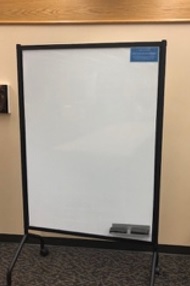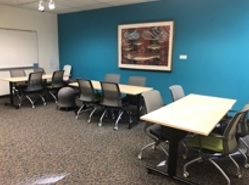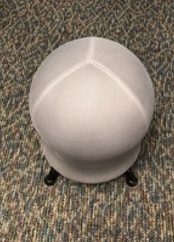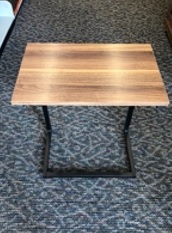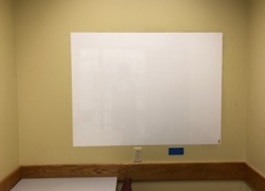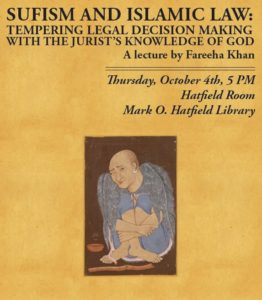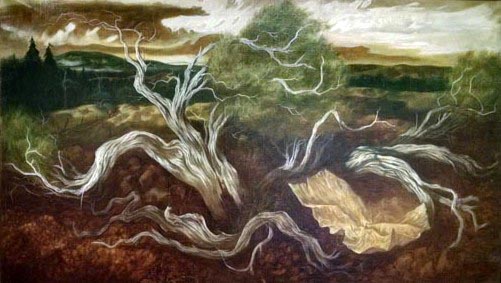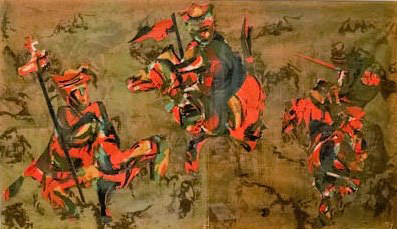From Wittenberg to Willamette: Unlocking the Secrets of a Rare Book from the Hatfield Library’s Vault.
By Doreen Simonsen
Humanities, Fine Arts, and Rare Book Librarian
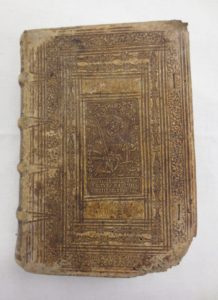
Cover of the 1599 Vulgate
Researching a Rare Book is often like a treasure hunt. The Mark O. Hatfield Library has hundreds of rare books ranging from medieval manuscripts to 20th century first editions, and my study of one of these works, a Latin Bible entitled Biblia Sacra, proves that you really cannot judge a book by its cover.
It all started with Martin Luther. His actions in Wittenberg inspired the leaders of the Counter Reformation to revise their version of the Bible. With the endorsement of Pope Clement the Sixth (1592 to 1605) and the Council of Trent (1545 – 1563), the Clementine Vulgate Bible was printed widely throughout Europe. Our library catalog record for this book notes that our copy was published in Antwerp, Belgium at the Plantin Moretus Printing House in 1599. According to records from that printing house, Jan Moretus shipped 500 unbound copies of this book, Biblia Sacra, to Germany to be sold at the famous Frankfurt Book Fair in the Fall of 1599. The books in that shipment were missing a quire, (a section) of the book, and our copy has missing pages, which were replaced with handwritten copies of the missing texts. But who wrote those handwritten pages? And who bound this book?
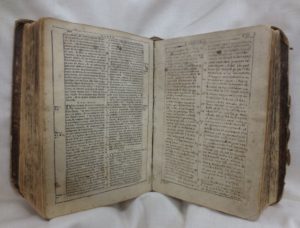
Missing Pages from 1599 Vulgate
In the Renaissance and Reformation, books were sold unbound, and the buyers of those texts would have them bound by professional bookbinders. Thanks to Luther’s nailing his 95 Theses to the door of the cathedral in Wittenberg in 1517, that city became a center of book publishing and bookbinding. By 1555 Wittenberg had a guild of 50 bookbinders, who engraved metal plates and rolls to decorate the leather book covers they made. The cover on our bible is embellished with images, borders, Latin quotes, the initials CKW and the date 1562. CKW turned out to be Caspar Kraft of Wittemberg, a prominent bookbinder in that city in northern Germany. The images on his 1562 plates are of Justicia and Lucretia, images “that Lutherans used to justify their resistance to imperial [and papal] authority.”1
Around these images are decorative borders made by bookbinding rolls, which were made by Hans Herolt of Würzburg, in southern Germany. Who hired Herolt to bind this book? Julius Echter von Mespelbruun, the Prince-Bishop of Würzburg from 1573 – 1617, is the most likely candidate. A Latin inscription in the books states that “Magister Wolfgang Christoph Röner received (this book) due to the generosity of the most reverend and most holy Prince-Bishop of Würzburg.” Another inscription is by Andreas Weissens…, a theology student, who might be the person who wrote in the missing pages in this bible.
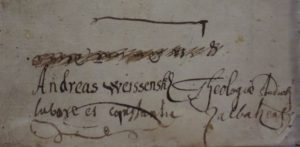
Theology Student Inscription
The most prominent inscription, however, is that of Dr. Charles H. Hall who gave this book to Willamette University in 1875. Born in Kentucky, Hall studied Classics at Indiana Ashbury College in 1852, taught Latin, Greek, and Natural Sciences at Willamette University in the late 1850s, and became the son-in-law of Alvan Waller in 1859.
How this Latin Catholic Bible with Lutheran images on the bindings traveled from Germany to America is a mystery that may never be solved, but revealing its secrets shows that rare books can be more than old texts with pretty pictures. They are artifacts worthy of study in their own right that can illuminate historical controversies and engage curious student researchers here at Willamette University. A rare book can truly be much more than its cover.
 |
“Closeup of the CKW 1562 book
plate stamp made by Caspar
Kraft of Wittenburg, Germany” |
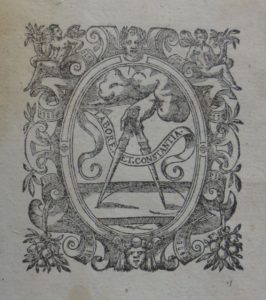 |
“Emblem of the Plantin Moretus
Printing House, Antwerp, Belgium” |
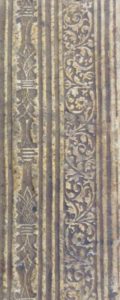 |
“Closeup of the book border rolls
made by Hans Herolt of
Würzburg, Germany” |
 |
“Inscriptions, Including Charles Hall’s
Donation to Willamette, 1876″ |
1 Zapalac, Kristin Eldyss Sorensen. In His Image and Likeness : Political Iconography and Religious Change in Regensburg, 1500-1600. Cornell University Press, 1990. Page 128.


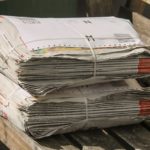
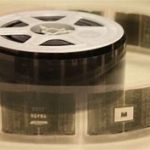
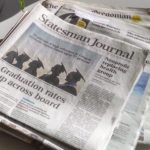
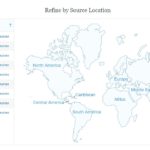
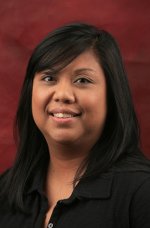 Circulation students arrive 15 minutes before the library officially opens. We go through the building to turn on the computers, printers and other equipment so that they are ready for patrons to use. We also go through and make sure that supplies such as paper and staples are stocked. All of the materials that have been placed in the book drop overnight are checked in and sorted for reshelving. Finally, the bulk of the morning is spent processing Summit materials. We check in and sort all of the MOHL items that are being returned to us. We also receive the materials that Willamette students and faculty have requested from other libraries and place them on the hold shelf for check out.
Circulation students arrive 15 minutes before the library officially opens. We go through the building to turn on the computers, printers and other equipment so that they are ready for patrons to use. We also go through and make sure that supplies such as paper and staples are stocked. All of the materials that have been placed in the book drop overnight are checked in and sorted for reshelving. Finally, the bulk of the morning is spent processing Summit materials. We check in and sort all of the MOHL items that are being returned to us. We also receive the materials that Willamette students and faculty have requested from other libraries and place them on the hold shelf for check out.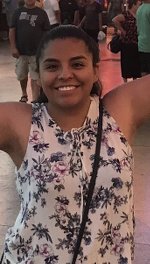 On Friday and Saturday, there are often only a few students using the library. It is mostly quiet on both floors, but walking around to take a headcount encourages student workers to check and see if anything needs to be shelved or cleaned. It is also when we check for any issues with security or equipment. Weekend shifts are a good time to catch up on any shelf reading, organize our work space at the circulation desk, and restock our office supplies. Student managers inform student assistants if there are any special projects that need to be completed, such as taking down or putting up new displays. Making these shifts enjoyable and productive is all about finding balance by dividing the tasks among staff and allowing some down time.
On Friday and Saturday, there are often only a few students using the library. It is mostly quiet on both floors, but walking around to take a headcount encourages student workers to check and see if anything needs to be shelved or cleaned. It is also when we check for any issues with security or equipment. Weekend shifts are a good time to catch up on any shelf reading, organize our work space at the circulation desk, and restock our office supplies. Student managers inform student assistants if there are any special projects that need to be completed, such as taking down or putting up new displays. Making these shifts enjoyable and productive is all about finding balance by dividing the tasks among staff and allowing some down time.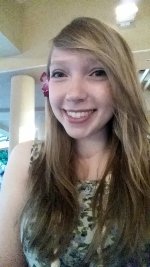 Working the closing shift at the Mark O. Hatfield Library is a very similar process to tucking a child into bed. First, we send home all of the library’s friends with the promise that they may come back tomorrow for more learning and fun. Next, though we don’t use toothbrushes, we help the library stay clean by clearing the whiteboards and picking up any stray books. We then tuck the library into bed, pushing in the chairs and making sure there is no garbage around to give the library nightmares. One simply cannot forget to read the library an exciting bedtime story about taking the final gate count and unlocking the book drop. Finally, we turn off the lights, lock the doors, and say a soft goodnight to our dearest library.
Working the closing shift at the Mark O. Hatfield Library is a very similar process to tucking a child into bed. First, we send home all of the library’s friends with the promise that they may come back tomorrow for more learning and fun. Next, though we don’t use toothbrushes, we help the library stay clean by clearing the whiteboards and picking up any stray books. We then tuck the library into bed, pushing in the chairs and making sure there is no garbage around to give the library nightmares. One simply cannot forget to read the library an exciting bedtime story about taking the final gate count and unlocking the book drop. Finally, we turn off the lights, lock the doors, and say a soft goodnight to our dearest library.
